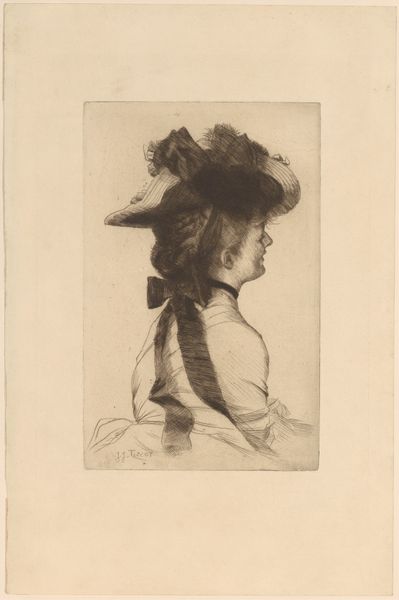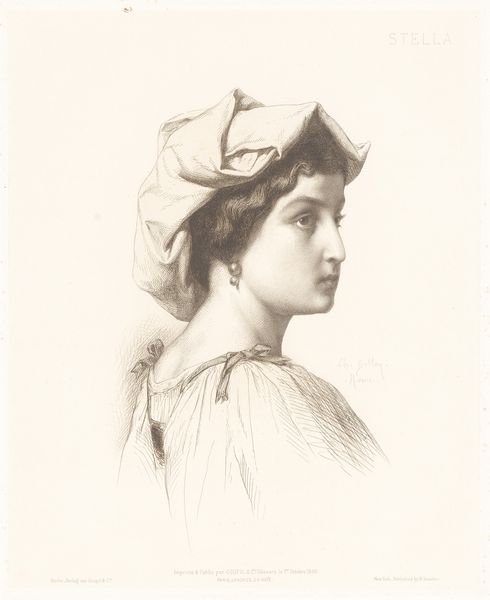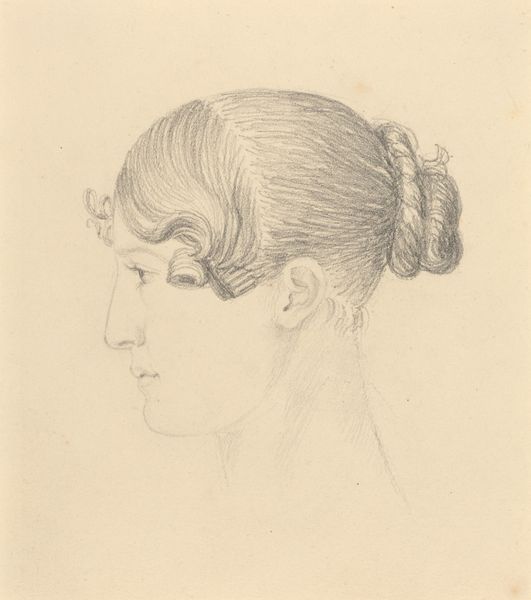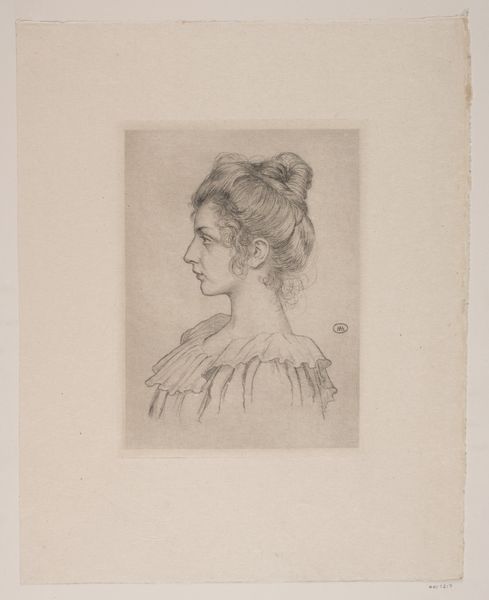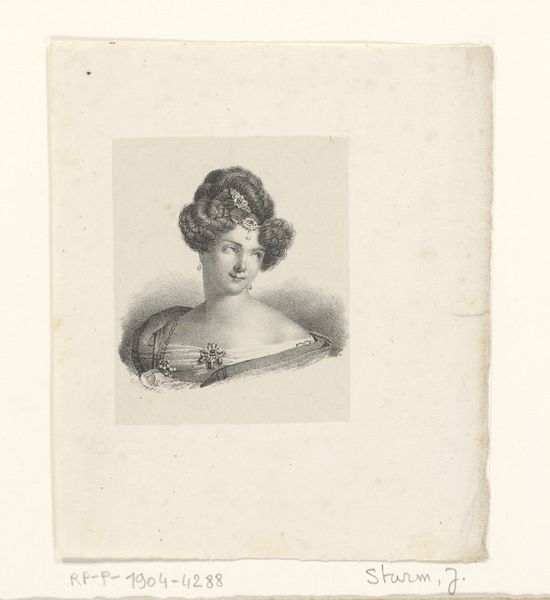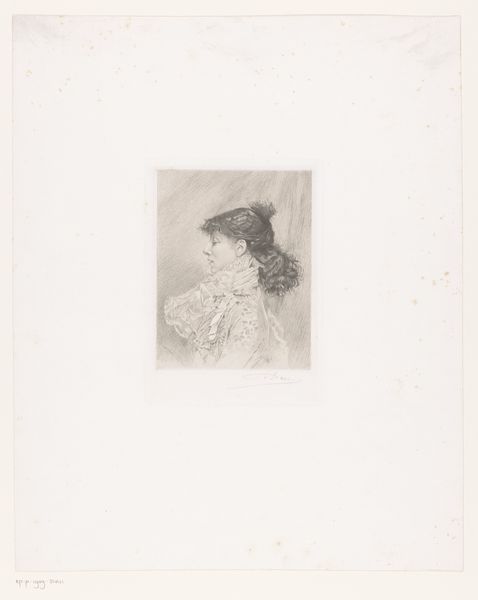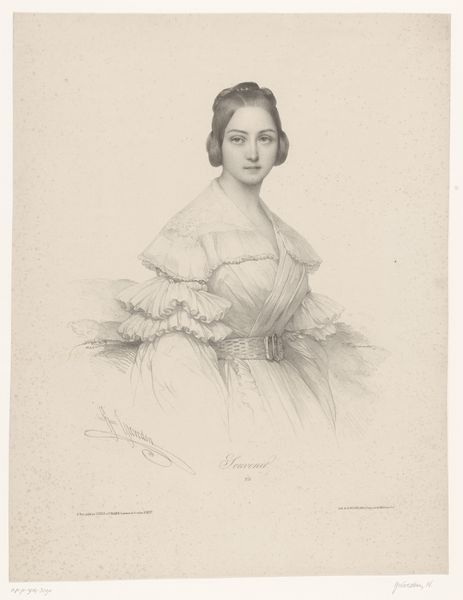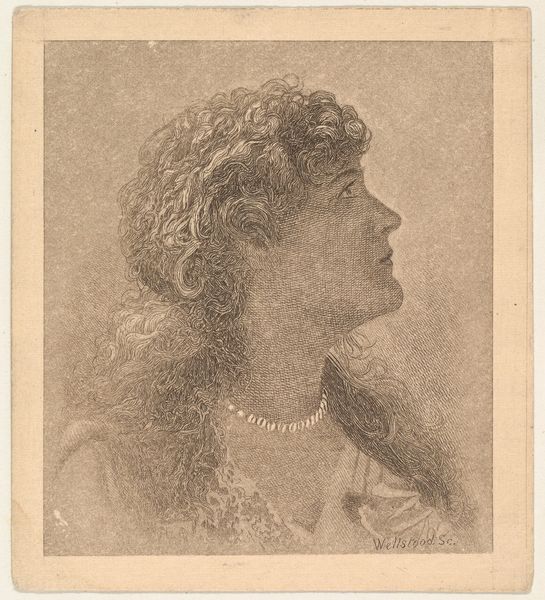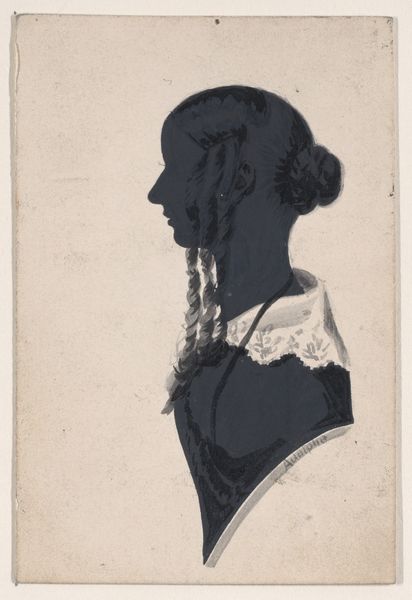
drawing, paper
#
drawing
#
paper
#
line
#
portrait drawing
#
academic-art
#
realism
Dimensions: height 318 mm, width 277 mm
Copyright: Rijks Museum: Open Domain
Curator: Here we have Charles Alphonse Paul Bellay’s "Portret van een Italiaanse vrouw," possibly from 1868, executed as a drawing on paper. Editor: It's remarkably delicate. There's something almost mournful about her gaze, and the fine lines create a sense of fleeting beauty. The emphasis seems to be on her ornate jewelry, doesn't it? Curator: It does. It would be fruitful to consider how representations of Italian women were circulated and consumed in the mid-19th century. This image, as a mass-produced drawing, engages with popular ideas about Italian identity and beauty. The choice of representing her in profile directs our gaze toward what might be constructed as archetypal "Italian" facial features: the aquiline nose, the dark hair pulled back, adorned with what might be Roman-style jewelry. Editor: And let’s not dismiss the actual paper. Consider where it came from, the labour involved in its manufacture, the role it plays as the ground for this image and the means by which the image is transmitted through the matrix of its material presence. Was it made by hand, by machine? What of the process? And how the drawing on paper renders light and shade? It’s an intimate interaction, this graphite and paper. The medium becomes the message, really emphasizing a certain subdued elegance. Curator: I agree. The very act of drawing, using line, evokes the linear narratives of academic art of that period and perhaps gestures toward Realism in its dedication to observed detail. This drawing and similar depictions often catered to a European bourgeoisie consuming romanticized notions of other cultures and women, situating them within patriarchal and colonialist structures. Editor: Precisely, and while we dissect representation, the actual making of the drawing – the tool, the skill, the deliberate marks – is key to understanding how Bellay participated in this commerce of images. How did this contribute to a discourse around what could be owned and what was of value, from this representation, to the paper, to the gemstone in the earring, each part is symbolic. Curator: Thinking of the materiality informs and complicates our analysis of gender and race in these images. The portrait offers us a view onto constructions of identity, of what’s deemed important or worth representing and circulating, how it becomes not just a woman's portrait but also evidence within art historical and political contexts. Editor: It adds depth, for sure. It keeps us anchored to the material realities of the art, the production, distribution, and reception as tangible artifacts. And in turn it allows us to see just how complicated our ideas about beauty can be.
Comments
No comments
Be the first to comment and join the conversation on the ultimate creative platform.





